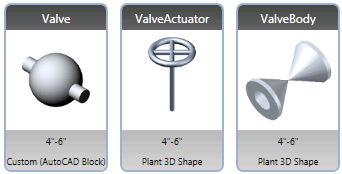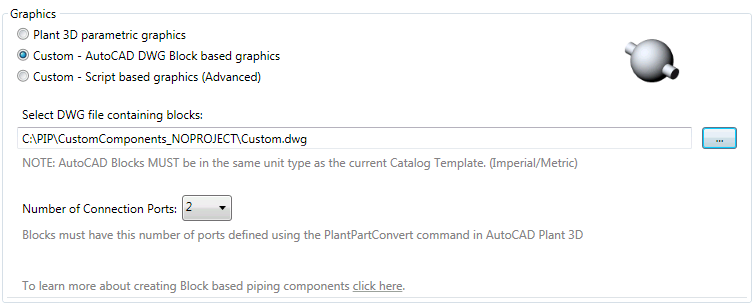Use the Catalog Builder to create and modify a CTPL catalog template file.
A catalog template specifies the type of components that a catalog contains. For example, you add Elbows, Tees, Pipe, and Valves to a catalog template. For each component type, the template contains properties that are shared by all sizes of the component. Shared properties include connection type, pressure rating, and material.
In a catalog template, you specify the component graphics. Parametric and block-based graphics are supported.

Catalog templates define component classes (for example: Elbow, Pipe, Tee, and Valve) and a size range.

You can specify parametric shapes, or block-based graphics. For more information on geometry types, see Modify Piping Components in a Catalog. You can also specify custom parametric (script-based) geometry.
Component Size Defaults
In addition to the properties that are shared by all sizes of a component, a catalog template contains a list of sizes (size range) for each component. With the shared properties and size list, you can then create an Excel file to set size properties. Finally, you can create a new catalog from the Excel file.
To make it easier to set component size properties, a catalog template can set default values for each component size when you create (Export to Excel) the Excel file. For example, you can specify that a 4" component has a 4.5" outside diameter. You can also specify a wall thickness for each size.
You provide dimensions for each component size in the Excel file. Dimension descriptions and part illustrations are provided to help you supply dimension values for your component graphics.
If you use block-based geometry for your component, you select the DWG that contains the blocks for that part family. You specify the block names for each size in Excel.
You can use long description styles to create descriptions for each size automatically.